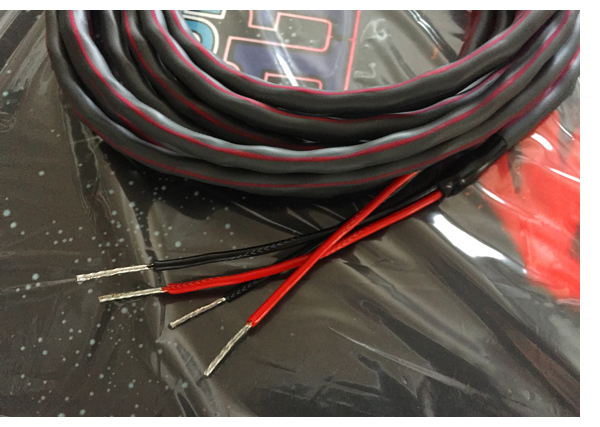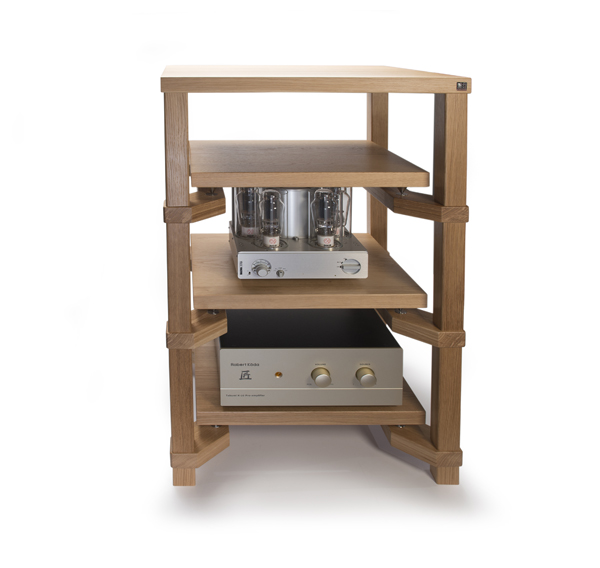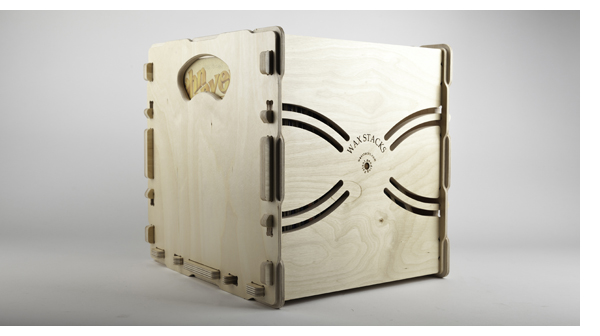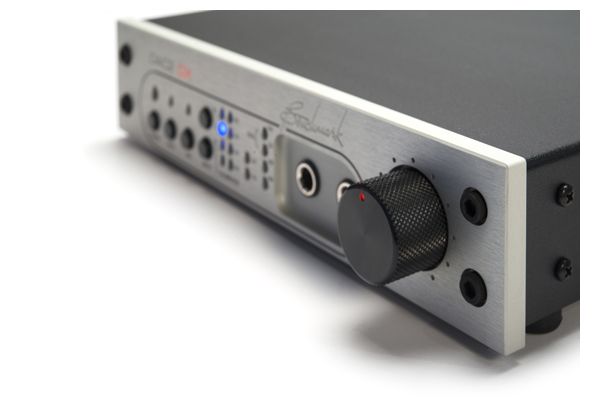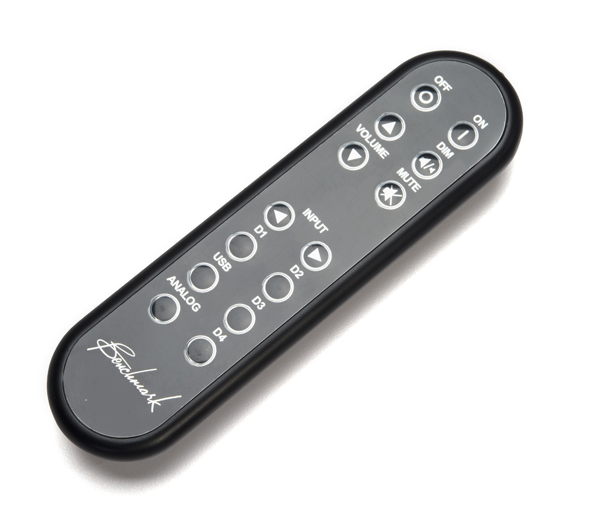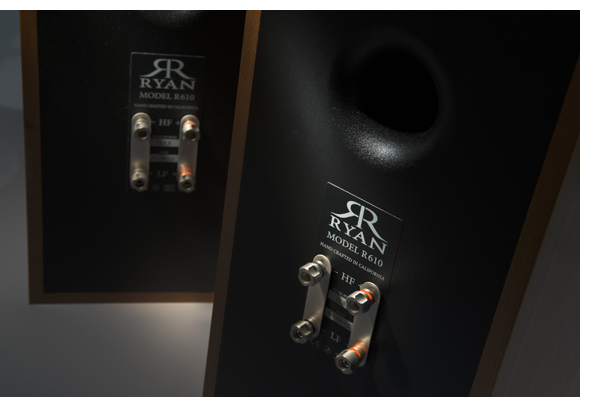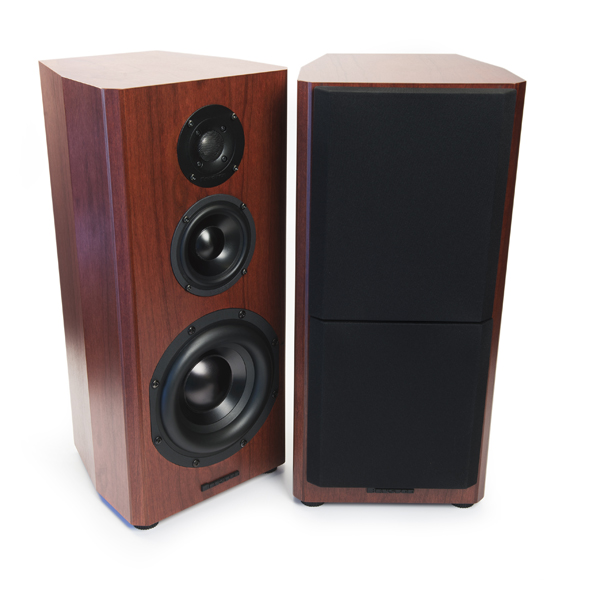 Bryston, the long-standing Canadian audio manufacturer, is highly respected on a number of fronts. Their gear is superbly built, rugged, and reliable. They also offer virtually unmatched support with multi-year warranties on most components. Their amplification is used worldwide in both professional and domestic audio environments. Their digital source components have been well received by the world press and remain in residence in my current reference system.
Bryston, the long-standing Canadian audio manufacturer, is highly respected on a number of fronts. Their gear is superbly built, rugged, and reliable. They also offer virtually unmatched support with multi-year warranties on most components. Their amplification is used worldwide in both professional and domestic audio environments. Their digital source components have been well received by the world press and remain in residence in my current reference system.
As comprehensive as Bryston’s product line is, with power amps, preamps, integrated amplifiers, digital file players, and power products, there was until recently one omission: loudspeakers. This gap in their product line has been filled with an extensive lineup of speakers ranging from the Mini A “bookshelf” model all the way up to big and bold room-filling floorstanders.
Why speakers?
The impetus behind Bryston’s drive to produce loudspeakers in an already crowded and competitive area is their VP of Product Marketing, James Tanner. Tanner, in his quest for a speaker that would satisfy him personally, came up short in his search, and thus decided to pursue an original design that would achieve certain goals. His efforts translated into results that were satisfying enough that Bryston decided to distribute these designs commercially.
Bryston put a lot of resources into R&D, doing extensive testing, listening, and measuring with the help of fellow Canadian manufacturer Axiom, whose facilities are state of the art. The speaker lines are all manufactured in Canada – no outsourcing here – and there is an accompanying unheard of twenty-year warranty.
The Mini T monitor loudspeaker in this review sells for $3,200. The Mini T is flanked by the Mini A, its smaller brother, and at the top of the line, the mighty Model T Signature flagship multi-way tower. There is nothing actually “mini” about the Mini T, as it stands 22.5“ high and weighs in at 42 lbs. The speaker is a three-way, with a 1” dome tweeter, a 5.25“ midrange driver, and an 8“ woofer. The frequency response is stated as 33Hz to 20kHz, impressive at this price point. Efficiency is average, at 86 dB, 4 ohms, nominal.
The Mini T is available in Black Ash, Boston Cherry, Natural Cherry, and in custom veneers at an additional charge. There are custom stands available to which the Mini T can be bolted. Out of the box, the Mini T exudes quality. The finish, construction, and binding posts are first class – what many have come to expect from Bryston.
The Mini T takes residence in good company. The speakers are driven by an Audio Research VS55 tube amp, the Simaudio 760A solid-state powerhouse and a Coffman Labs G1-A tube preamp. Sources are Simaudio’s NEO 380D DAC, Bryston’s own BDA-1 DAC, and a Revox A77 tape deck. Cabling is Stager, Transparent, and DH Labs with the Mini Ts sitting comfortably on custom Sound Anchor stands.
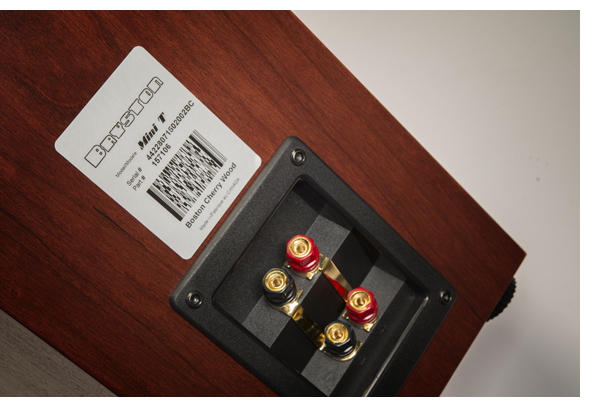
Getting down to business
After a relatively short 25-hour break-in period, the listener is treated to a wonderfully coherent, integrated, and live sound. The Mini Ts are not slow, midrange heavy classic British style monitors of yesteryear. They are very much a modern product, with amazingly low distortion levels, deep, very satisfying bass, and an open, transparent midrange.
Listening reveals the Mini Ts’ opposing strengths. They are incredibly nimble and quick, yet buttery smooth and relaxed at the same time, projecting an unusually deep soundstage to boot. The reverb feels wetter, note decays are longer, and timing is better than any other speaker at this price point that I’ve experienced.
The Cars studio albums, remastered at 24/192, sound fresh, vibrant, and not the least bit dated via the Mini T. It is a real treat to hear such classics as “Good Times Roll,” “Got a Lot on My Head,” “Candy O,” and others with crunchy guitars, articulated bass lines, and the classic vocals of Ric Ocasek and Ben Orr floating holographically in the center of the mix.
The latest album from immensely gifted jazz singer Gregory Porter, Liquid Spirit, 96 kHz download, plays to many of the Mini T’s strengths: accurate tonality, correct instrumental timbres, and musical pacing. Porter sings like a human cello, with a bit of the finesse of Nina Simone, and the conversational style of Bill Withers, and the Brystons render his voice in a most astonishingly present way.
The Mini Ts do the versatility thing without breaking a sweat. Orchestral pieces, classic Blue Note jazz ensemble recordings, and classic rock are just different channels on the dial for the Bryston. No matter the source – analog or digital – the Mini Ts easily draw you in. Listening to Steppenwolf’s Gold: Their Greatest Hits on reel-to-reel is one of the highlights of the review period. The fuzzed-out guitars, psychedelic arrangements, and the ominous vocals of John Kay have the house rocking.
The Pentangle’s sublime Basket of Light, on SHM-CD, a longtime reference for evaluating speakers, is presented in a way suggesting electrostatic-like transparency and dynamics, especially on the track “The Cuckoo,” with the late, great, John Renbourn and Bert Jancsh’s acoustic guitars, the wonder that is Jacqui McShee’s voice, and Danny Thompson’s otherworldly acoustic bass. I’ve had very few true jaw-dropping moments in hifi, but this was one of them. The Mini Ts could have passed for floorstanders, given the earthy, deep-rooted foundation of the music.
The Mini Ts are also a breeze to set up. They are not super fussy about room placement, but of course a bit of experimentation is advised. Being relatively close to boundaries does not cramp their style, like so many high end speakers. This is due to the controlled way the Mini Ts’ drivers disperse energy into the room. Despite the cabinet not being designed to to “tame” resonances into oblivion, which can cause other problems, there is no apparent transient smearing or non-mechanical distortion present.
A solid performer indeed
Bryston, with the Mini T stand-mounted monitors, eschews the “flavor of the month” design and concentrates on maximizing the potential of a three-way dynamic loudspeaker. The results are a smashing success. The Mini Ts will remain in my system as a reference in this price point. My only complaint is the stamped metal jumpers, but that is a small problem easily solved.
It must be noted the Bryston Mini T will rise to occasion with high-quality partnered equipment. Great cables, amplification, and sources will pay huge dividends due to the speaker’s low distortion. Focusing on amplifier quality rather than overall power rating will pay dividends, and the Bryston dedicated stands are definitely worth a look. The Bryston Mini T monitors are among the best deals going. An audition is highly recommended. Bring your favorite recordings and prepare to be impressed.

Additional Listening
I’ve heard the Bryston speakers a few times at various shows and have always come away impressed, but it’s always nice to set them up in a familiar environment and make a few brief comparisons. On the heels of the impressive $4,000 Eggleston Emmas that are my budget reference, the Bryston Mini T delivers excellent performance.
The size is a bit odd, as they are not really big enough to be floorstanders, but hardly small enough to be considered small monitors. For most this should not be an issue, but small kids and tail-happy dogs might be problematic.
I agree with Andre: the Mini Ts are incredibly easy to set up and get great sound with minimal fuss. After the photographs were taken, I took the liberty of trying them in three separate rooms: a small but modestly treated room (10 x 13 feet), my large listening room (16 x 25 feet) and the living room in my house, which has to be the worst sounding room I’ve ever heard, yet it makes for a great “real world” listening environment. The Mini Ts shined in all three.
Having heard Bryston amplification in a number of the world’s finest recording studios, matched with PMC loudspeakers, I’d make this comparison. The Mini T is very linear, with wide dispersion and sounds great whether you are sitting on the couch or hanging out, listening on the floor in the corner of the room – a plus for a speaker that you want to share with friends. It should come as no surprise that the Mini Ts sound fantastic with Bryston amplification, but their chameleon-like character makes them a good match for anything else on the shelf, from a vintage Marantz receiver to the Boulder 2160 I have here for review. But beware that these speakers reveal what they are fed, so if you aren’t happy with the end result, it’s probably due to something not quite right in your system. As I tend to prefer sound tipped a bit more to the warm romantic side, I preferred the Mini Ts with tube gear, to inject a little extra midrange magic into the presentation, and again, because these speakers are so natural, you can easily fine tune them to your taste.
Lastly, don’t let the 86db sensitivity rating fool you. The Mini-Ts are incredibly easy to drive and will provide more than satisfying sound pressure levels in a modest room with 20 watts of tube power. I found the Retro i-50 integrated we reviewed last issue to be more than enough in my 10 x 13 foot room. Of course, more power will provide more dynamics, especially in a larger room and on the opposite end of the spectrum, the Mini-Ts delivered an equally impressive performance in y large room with the Pass Labs Xs 300 monoblocks. These are definitely speakers you can grow with!
For just over three grand, this company, well known for their electronics, has produced a winning loudspeaker. We are very happy to give them one of our Exceptional Value Awards for 2015. If you’re speaker shopping, stop by your nearest Bryston dealer with a few of your favorite tracks. –Jeff Dorgay
The Bryston Mini T Loudspeaker
MSRP: $3,200
www.bryston.com
PERIPHERALS
|
| Amplifier |
Simaudio 760A Audio Research VS55 |
| Preamplifier |
Coffman Labs G1-A |
| Digital |
Simaudio Neo 380D Bryston BDA-1 |
| Server |
Simaudio MiND SOtM sMS-100 |
| Tape Deck |
Revox A77 |
| Cables |
Transparent Audio DH Labs Stager Acoustic Zen |
| Accessories |
Symposium Audience Sound Anchor |




